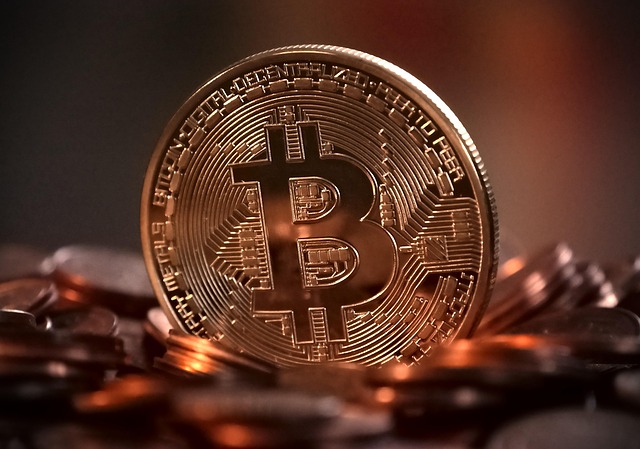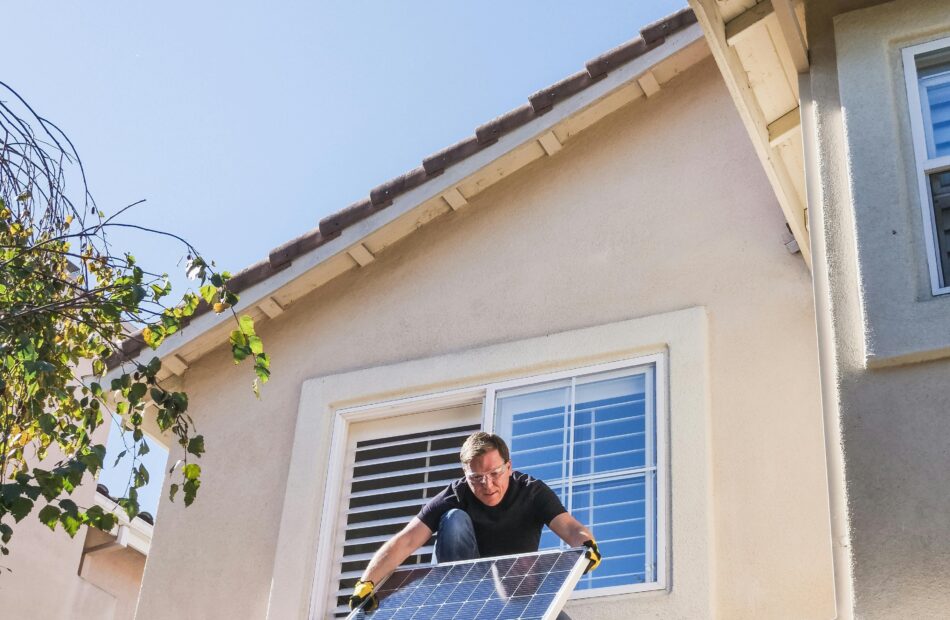CZ claps back against ‘baseless’ US plea deal allegations
Changpeng “CZ” Zhao, former CEO of Binance, has denied claims that he agreed to provide evidence against Tron founder Justin Sun as part of a plea deal with the United States Department of Justice (DOJ).In an April 11 report, The Wall Street Journal cited unnamed sources alleging that CZ had agreed to testify against Sun under the terms of his settlement with US prosecutors.“As part of Zhao’s plea deal, he agreed to give evidence on Sun to prosecutors,” an “arrangement” that “hasn’t previously been reported,” the WSJ report stated, citing sources familiar with the matter.“WSJ is really TRYING here. They seem to have forgotten who went to prison and who didn’t,” Zhao wrote in an April 12 X post. “People who become gov witnesses don’t go to prison. They are protected. I heard someone paid WSJ employees to smear me.”Source: Changpeng ZhaoCZ was sentenced to four months in prison in April 2024 for Anti-Money Laundering (AML) violations. He walked free from federal prison on Sept. 27 as the wealthiest person to ever serve a US prison sentence, with a $60 billion net worth at the time.In a separate April 11 post, CZ claimed multiple individuals had warned him about the Journal’s intentions to publish what he described as a “hit piece.”Source: Justin SunSun said he was “not aware of the circulation rumors,” calling CZ his “mentor and close friend,” Cointelegraph reported on April 11.Related: Trump kills DeFi broker rule in major crypto win: Finance Redefined“Some players are lobbying against us again in the US” — CZCZ further speculated that the report could be linked to lobbying efforts against him and his former company. “I also heard some rumors about some players ‘lobbying’ against us again in the US,” CZ said.Cointelegraph has approached CZ for more details on the lobbying claims.In November 2023, Zhao said that “FTX sought regulatory ‘crack down’ on Binance to increase market share,” citing a Federal Newswire report.Related: New York bill proposes legalizing Bitcoin, crypto for state paymentsZhao’s comments come over a month after crypto donations raised influence concerns among industry participants.Crypto firms spent over $134 million on the 2024 US elections in “unchecked political spending,” which presents some critical challenges, Cointelegraph reported on March 10.Fairshake donations. Source: politicalaccountability.net“While the companies making these contributions may be seeking a favorable regulatory environment, these political donations further erode public trust and expose companies to legal, reputational, and business risks that cannot be ignored,” according to a March 7 report by the Center for Political Accountability (CPA).Magazine: XRP win leaves Ripple and industry with no crypto legal precedent set
NFT trader sells CryptoPunk after a year for nearly $10M loss
An investor has sold a CryptoPunk non-fungible token (NFT) at a nearly $10 million realized loss, reflecting the continued decline in the once-booming blue-chip NFT market.A whale, or large cryptocurrency investor, sold a CryptoPunk NFT for 4,000 Ether (ETH) worth more than $6 million at the time of writing.The investor originally purchased the NFT for 4,500 ETH, or roughly $15.7 million, a year ago, according to blockchain analytics firm Lookonchain.“Did he only lose 500 $ETH($774K)? No—he actually lost $9.73M!” Lookonchain wrote in an X post. “When he bought it, $ETH was trading at $3,509. By the time he sold, $ETH had dropped 57%,” the platform added.CryptoPunk buy and sell. Source: Arkham Intelligence / LookonchainDespite the steep loss, the $6 million transaction still ranks as the largest NFT sale over the past 30 days, according to data from CryptoSlam.Top NFT sales past 30 days. Source: CryptoSlamThe sale comes during a period of stagnation for NFTs, which have been lacking wider trader interest. NFT trading volume on Ethereum is down more than 53% over the past month, while Polygon’s NFT trading volume fell 41%.CryptoPunks saw a temporary floor price surge of 13% after rumors that its owner, Yuga Labs, might be “in the process” of selling the collection’s intellectual property, Cointelegraph reported on Jan. 14.Related: Sentient completes record 650K NFT mint for decentralized ‘loyal’ AI modelBlue-chip collections see steep dropThe top blue-chip NFT collections remain significantly down from their 2021 highs amid a lack of trading activity.CryptoPunks currently have a floor price of about 43 ETH, or $68,000, down more than 61% from their record high of 113.9 ETH in October 2021.CryptoPunks NFT floor price, all-time chart. Source: NFTpricefloor The Bored Ape Yacht Club’s floor price is also down 89%, while the Mutant Ape Yacht Club collection is down 93%, NFTpricefloor data shows.Related: Trump family memecoins may trigger increased SEC scrutiny on cryptoHowever, the Pudgy Penguin collection remains an outlier. It reached a new all-time high of over 25 Ether on Dec. 16, 2024, and amassed the highest sales volume of over $72 million in the first quarter of 2025, Cointelegraph reported on March 28.Source: Yuga Labs At the start of March, the US Securities and Exchange Commission closed its three-year investigation into Yuga Labs, an investigation initiated under former Chair Gary Gensler, which aimed to probe NFT creators and marketplaces, to see if some NFTs, such as fractional NFTs, were securities.Magazine: Memecoin degeneracy is funding groundbreaking anti-aging research
How to mine Bitcoin at home in 2025
Key takeawaysLottery mining is cheap and fun, but don’t count on hitting a block.Solo ASIC mining gives you complete control, but it’s a long-odds game.Pool mining is the most practical way to earn steady payouts at home.Cloud mining saves you the hassle but usually isn’t worth the cost.Bitcoin is rapidly gaining legitimacy, and you couldn’t be blamed for wanting to peek behind the curtain to see how it’s made.Throughout 2024 and into 2025, you’ve seen a whirlwind of institutional investment from companies like Strategy, which continues to aggressively accumulate Bitcoin (BTC), and Metaplanet, Japan’s listed company that recently adopted BTC as a treasury reserve asset. Moreover, on the regulatory front, the return of a US President Donald Trump administration signals a friendlier stance toward crypto, with talk of rolling back SEC overreach and possibly supporting US-based mining. Across the Atlantic, the MiCA (Markets in Crypto-Assets) regulation has gone into effect in the EU, offering clearer guidelines and reducing regulatory uncertainty for retail investors and miners alike.Then there’s the price. Bitcoin finally broke the long-anticipated $100,000 resistance level in early 2025, following a post-halving supply shock and increased ETF-driven demand. As institutions pour in and supply tightens, more individuals are re-evaluating how to get involved.Whatever your motivation, one thing’s certain: You want to mine from the comfort of your home. This article will explain four realistic ways to mine Bitcoin at home in 2025, what gear you’ll need, how much it might cost, and what kind of returns you can expect.Did you know? Bitcoin mining has developed into a sizable industry, with revenues growing by over 6,700% from 2021 to 2025. Option 1: Lottery mining – Low power, high risk, rare rewardsIf you’re working with a limited budget but still want to try Bitcoin mining, lottery mining offers an interesting — if highly unpredictable — way.In July 2024, a solo miner using just three TH/s of hash power — roughly what you’d get from two small USB devices — successfully mined an entire Bitcoin block. The reward was 3.192 BTC, worth over $200,000 at the time. Statistically, that kind of result should take thousands of years. But with some luck and help from the Solo CKPool platform, it actually happened.These wins are extremely rare, but they do happen. And that’s what keeps some people interested.Most lottery miners use small, low-power devices like the Bitaxe HEX, an open-source miner built with actual Antminer chips. It runs at around three TH/s, costs about $600 and pairs easily with a Raspberry Pi. Another popular option is the GekkoScience R909, a USB miner running at 1.5 TH/s and a favorite among hobbyists. These devices aren’t built for steady income. They’re closer to digital slot machines, but ones that still contribute to securing the Bitcoin network.So why do people do it?Three main reasons:Running an independent node supports the health and resilience of the Bitcoin network.It’s a good way to get familiar with how mining works.A single successful block can be worth a lot, and it’s all yours if it happens.For most, it’s not about making money. It’s about the challenge and the curiosity, like building a custom PC or restoring a vintage radio. And yes, it also looks great plugged in on a shelf, blinking quietly under a glowing Bitcoin lamp.Next up: ASICs, the heavy-duty hardware of serious miners.Did you know? Solo CKPool is designed for independent miners who want to submit their shares directly to the Bitcoin network. Unlike traditional mining pools, if you’re successful here, the entire reward goes to you (minus a small pool fee). There’s no revenue sharing, no splitting blocks.Option 2: ASIC mining – Solo mining with real hardwareIf lottery mining is like buying a single ticket and hoping for a lucky break, solo mining with an ASIC is showing up with a small stack. Your chances improve, but it’s still a long shot.ASICs — application-specific integrated circuits — are purpose-built for Bitcoin mining. In 2025, high-end models like the Antminer S21 Hydro deliver impressive performances, reaching around 400 terahashes per second with improved energy efficiency over previous generations.Let’s look at the numbers.The Bitcoin network currently runs at around 500 exahashes per second. With one S21 Hydro, you’d control roughly 0.00008% of the total hashrate. That gives you odds of about one in 8.6 billion of finding a block on any given day. It’s still extremely unlikely, but it’s far better than what you’d get with low-power USB miners.To meaningfully improve your chances, you’d need to scale up.Running 20 ASICs could put you past eight petahashes per second, enough, in theory, to find a block about once a year. But that setup requires significant capital, proper ventilation or immersion cooling and a reliable energy supply. Even then, outcomes are unpredictable. The Bitcoin network might find several blocks in an hour or none at all.Still, some miners go this route. The appeal is simple: If you do find a block on your own, you keep the entire reward, currently over three BTC, plus transaction fees. There is no need to split the payout with anyone else.But for most people, even those with top-tier ASICs, solo mining remains a high-risk approach with uncertain rewards.Did you know? The cost of the latest mining equipment has significantly decreased, with prices around $16 per terahash in 2025, compared to $80 per terahash in 2022, enhancing mining efficiency.That’s why many home miners eventually turn to a more consistent and scalable model:Joining a mining pool.Option 3: Pool mining – Strength in numbersIf solo mining is a long shot, pool mining is the practical alternative. It’s how most home miners approach Bitcoin mining in 2025 – and with good reason.By joining a mining pool, you combine your hashrate with thousands of other participants. When the pool successfully mines a block, the reward is split based on each miner’s contribution. You’re no longer chasing a rare solo win, but earning smaller, steady payouts. It’s more predictable, less risky and not so dependent on luck.For example, if you’re running an Antminer S21 Hydro at 400 TH/s, that hash power earns you a proportional share of the pool’s rewards. You’ll likely see consistent daily income tied directly to your contribution.The largest pools today — Foundry USA, Antpool, ViaBTC, F2Pool — handle thousands of blocks every month. Many offer FPPS (Full Pay Per Share) models, where you’re paid for every valid share you submit, regardless of whether a block is found that day. Others use PPLNS (Pay Per Last N Shares), which only pays out when a block is discovered, but can result in slightly higher returns over time. The choice depends on how much payout fluctuation you’re comfortable with.Setting things up is straightforward:Create an account with your chosen pool.Point your ASIC miner to the pool’s server.Add your Bitcoin payout address.Monitor your stats from the pool’s web dashboard.The returns won’t be massive, but they’ll be consistent, and for many miners, that’s exactly the goal.But what if you want to skip the hardware, the setup and the electricity costs altogether? What if you want exposure to mining without running a machine?That’s where cloud mining comes in.Option 4: Cloud mining – Mining without the machinesCloud mining lets you rent hash power from a remote provider, who runs the hardware on your behalf. You don’t have to manage equipment, deal with heat or noise, or worry about electricity costs. You simply buy a contract, and if all goes well, you will receive a portion of the mining rewards.On paper, it sounds straightforward. You select a provider, choose how much hash power you want to rent, and pay either upfront or through a subscription. The provider takes care of the infrastructure, including maintenance and cooling. In return, you earn a share of the Bitcoin mined, proportional to your rented power.But there are trade-offs – and risks.Cloud mining has gained a mixed reputation. Over the years, the space has been flooded with questionable operators, unrealistic return promises and outright scams. Many contracts turn out to be unprofitable once you factor in service fees, maintenance costs and the increasing difficulty of mining. You’re effectively trusting a third party to operate machines you’ll never see.That said, there are a few reputable providers. Platforms like NiceHash, BitDeer and ECOS have remained active in the space and offer flexible, transparent options. Some let you choose specific coins or pools. Still, even with these more established names, margins tend to be very thin, especially during bear markets or when global hashrates spike.Cloud mining may be worth considering if:You have limited access to cheap electricity or space for equipment.You’re looking for a low-effort way to get exposure to mining.You view it more as a speculative bet than a reliable income stream.However, if your goal is consistent returns or hands-on experience, then running your own gear or just buying and holding Bitcoin is likely a better use of resources.The bottom lineThere’s no single right way to mine Bitcoin at home in 2025. It comes down to what you’re after. Lottery mining is fun and cheap, but the odds are long. Going solo with an ASIC gives you full control and full risk. Mining pools are the go-to for steady, reliable payouts. Cloud mining offers convenience but not much certainty.If you’re in it for the learning, the experience, or to slowly stack sats over time, there’s a setup that’ll fit. Just know what you’re getting into and why you’re doing it.
Bitcoin still on track for $1.8M in 2035, says analyst
Bitcoin remains on track to surpass $1.8 million by 2035 despite recent price corrections and waning investor appetite caused by ongoing global trade tensions, according to Joe Burnett, director of market research at Unchained.Speaking during Cointelegraph’s Chainreaction live show on X, Burnett said that Bitcoin is still in a long-term bullish cycle and could potentially rival or surpass gold’s $21 trillion market capitalization within the next decade.Despite tariff uncertainty limiting risk appetite among investors, research analysts remain optimistic about Bitcoin’s (BTC) long-term prospects for the next decade.“When I think about where Bitcoin will be in 10 years, there are two models I admire,” Burnett said. “One is the parallel model, which suggests that Bitcoin will be about $1.8 million in 2035.” “The other is Michael Saylor’s Bitcoin 24 model, which suggests Bitcoin will be $2.1 million by 2035.” Burnett emphasized that both are “good base cases,” adding that Bitcoin’s trajectory could exceed these predictions depending on broader macroeconomic factors.🎙Could Bitcoin really hit $10m by Q1 2035? Perhaps.But first, we need to unravel the tangled web of the markets this week, and for both discussions, @rkbaggs and @gazza_jenks are joined today by Joe Burnett (@IIICapital) on the #CHAINREACTION show! https://t.co/hfyEwGUCsh— Cointelegraph (@Cointelegraph) April 11, 2025Related: Bitcoin price can hit $250K in 2025 if Fed shifts to QE: Arthur HayesBitcoin outlook remains long-term bullish“The automobile industry is significantly more valuable than the horse and buggy industry,” Burnett said, adding that Bitcoin’s more advanced technological properties will make it surpass the $21 trillion market capitalization of gold. He added:“The gold market is an estimated $21 trillion market. If Bitcoin just hit $21 trillion and had Bitcoin-gold parity, Bitcoin would be $1 million per coin today.”Since US President Donald Trump’s Jan. 20 inauguration, global markets have been under pressure due to heightened trade war fears. Hours after taking office, Trump threatened to impose sweeping import tariffs aimed at reducing the country’s trade deficit, weighing on risk sentiment across both equities and crypto.While Bitcoin’s role as a safe-haven asset may reemerge amid ongoing trade war concerns, physical gold and tokenized gold remain the current winners.Top tokenized gold assets, trading volume. Source: CoinGecko, Cex.ioTariff fears led tokenized gold trading volume to surge to a two-year high this week, topping $1 billion for the first time since the US banking crisis in 2023, Cointelegraph reported on April 10.Related: Bitcoin’s 24/7 liquidity: Double-edged sword during global market turmoilStrong hands hold during drawdownsBitcoin’s volatility is falling during both bear and bull markets, signaling its growing maturity as an asset class.While another 80% drawdown during future bear markets is still possible, this will act as a robust acquisition period for the “strongest” holders, Burnett said, adding:“The highs bring [Bitcoin] attention, and the deep, dark bear markets move coins into the hands of the strongest, most convicted holders, as fast as possible.”Arthur Hayes, co-founder of BitMEX and chief investment officer at Maelstrom, predicted Bitcoin could climb to $250,000 by the end of 2025 if the US Federal Reserve formally enters a quantitative easing cycle.Despite the optimistic predictions, investors remain cautious and continue “rebalancing their portfolios” but are unlikely to take on significant positions in the next 90 days before markets gain more clarity on global tariff negotiations, Enmanuel Cardozo, market analyst at real-world asset tokenization platform Brickken, told Cointelegraph.“With money flowing out of Bitcoin ETFs, investors are looking for safer spots to hold their cash right now, including strong currencies. Gold’s a traditional vehicle in these cases and a go-to when markets are uncertain,” he added.BTC, gold, year-to-date chart. Source: Cointelegraph/TradingViewSince the beginning of 2025, the price of gold has risen over 23%, outperforming Bitcoin, which has fallen by more than 10% year-to-date, TradingView data shows.Magazine: Bitcoin’s odds of June highs, SOL’s $485M outflows, and more: Hodler’s Digest, March 2 – 8
SEC and Binance push for another pause in lawsuit after 'productive' talks
The US Securities and Exchange Commission (SEC) and crypto exchange Binance have asked a US federal judge for an additional two-month pause in their nearly two-year legal battle.“Since the Court stayed this case, the Parties have been in productive discussions, including discussions concerning how the efforts of the crypto task force may impact the SEC’s claims,” both parties said in an April 11 joint status report with the US District Court for the District of Columbia.SEC requests Binance to agree to the extensionAccording to the filing, the SEC requested and Binance agreed to another 60-day extension as the regulator continues to seek permission to “approve any resolution or changes to the scope of this litigation.” “The Defendants agreed that continuing the stay is appropriate and in the interest of judicial economy,” the filing said.The request comes not long after the SEC dropped a string of crypto-related lawsuits against crypto exchanges Coinbase, Kraken, and Gemini, as well as Robinhood and Consenys.At the end of the 60-day period, the SEC and Binance plan to submit another joint status report. This marks the second 60-day pause the SEC and Binance have requested this year, following a previous extension granted by the judge on Feb. 11.The recently launched crypto task force was a key reason behind the request for the second extension. Source: CourtListenerThe request in February came just days after crypto skeptic Gary Gensler stepped down as SEC chair on Jan. 20, with crypto-friendly SEC commissioner Mark Uyeda taking over as acting chair.At the time, the SEC and Binance also cited the establishment of the SEC’s Crypto Task Force as a reason for the pause.Related: Crypto Biz: Ripple’s ‘defining moment,’ Binance’s ongoing purgeFormed just a day after Gensler resigned on Jan. 21, the task force said it aims to “help the Commission draw clear regulatory lines, provide realistic paths to registration, craft sensible disclosure frameworks, and deploy enforcement resources judiciously.” The SEC’s legal battle with Binance has dragged on for almost two years. It began in June 2023 when the agency filed a lawsuit against Binance, its US platform, and CEO Changpeng “CZ” Zhao.The US regulator pressed 13 charges against Binance, including unregistered offers and sales of the BNB and Binance USD tokens, the Simple Earn and BNB Vault products, and its staking program.Magazine: Memecoin degeneracy is funding groundbreaking anti-aging research
Justin Sun 'not aware' of circulating reports about CZ plea deal
Tron founder Justin Sun says he’s unaware of the recent rumors surrounding former Binance CEO Changpeng “CZ” Zhao, following reports alleging that Zhao provided evidence against him as part of his plea deal with the US Department of Justice (DoJ).“I’m not aware of the circulating rumors. CZ is both my mentor and a close friend,” Sun said in an April 11 X post. Sun brushes off CZ rumors“He has played a crucial role in supporting me during my entrepreneurial journey,” Sun added.Sun’s X post came just hours after speculation grew over an April 11 Wall Street Journal report, which alleged that Zhao agreed to provide evidence on Sun as part of his plea deal, citing sources familiar with the matter. Zhao was sentenced to four months in prison in April 2024 for Anti-Money Laundering (AML) violations.The report added, “that arrangement hasn’t previously been reported.”Source: dbWhile Zhao is yet to publicly address the reports, Sun commended Zhao’s integrity and said that the DoJ is one of T3 Financial Crime Unit’s (T3 FCU) — which Tron co-founded along with Tether and TRM Labs — “closest and most trusted partners.” “To this day, his conduct and principles remain the highest standard I strive to follow as a founder,” Sun said of Zhao. Sun added:“Whether it’s CZ or our partners at the DOJ, we maintain direct, honest communication at all times. I have full trust in each and every one of them.”Zhao walked free from a US federal prison on Sept. 27. With a reported net worth of approximately $60 billion, Zhao is the wealthiest person ever to serve a prison sentence in the US.Source: Justin SunMeanwhile, on Feb. 26, the US Securities and Exchange Commission and Justin Sun asked a federal court to pause the regulator’s case against the crypto entrepreneur to allow for settlement talks.In March 2023, the SEC sued Sun and three of his companies, the entity behind Tron, the Tron Foundation and the file-sharing platform backers the BitTorrent Foundation and its San Francisco-based parent firm, Rainberry Inc.Cointelegraph reached out to the US Department of Justice but did not receive a response by time of publication.
US crypto industry needs band-aid now, 'long-term solution' later — Uyeda
A fast-tracked temporary crypto regulatory framework could bolster innovation within the US crypto industry while permanent regulations are still in the works, says acting US Securities and Exchange Commission (SEC) chair Mark Uyeda.“A time-limited, conditional exemptive relief framework for registrants and non-registrants could allow for greater innovation with blockchain technology within the United States in the near term,” Uyeda said at the SEC’s April 11 Crypto Task Force roundtable titled “Between a Block and a Hard Place: Tailoring Regulation for Crypto Trading.”Relief measures may address immediate challengesUyeda said this might be the short-term answer as the SEC works toward a “long-term solution,” at the roundtable with SEC members and crypto industry executives, including Uniswap Labs’ Katherine Minarik, Cumberland DRW’s Chelsea Pizzola, and Coinbase’s Gregory Tusar.He flagged state-by-state regulation of crypto trading as a concern, warning it could lead to a “patchwork of state licensing regimes.” Uyeda said that a favorable federal regulatory framework would ease the burden for market participants wishing to offer tokenized securities and non-security crypto assets, allowing them to operate under a single SEC license instead of navigating “fifty different state licenses.”He urged crypto market participants to share feedback on areas where “exemptive relief” could be appropriate.Source: US Securities and Exchange CommissionUyeda also reiterated the benefits of blockchain technology in financial markets during the roundtable discussion. “Blockchain technology offers the potential to execute and clear securities transactions in ways that may be more efficient and reliable than current processes,” Uyeda said.Uyeda to fill chair position until Atkins is sworn in“Blockchains can be used to manage and mobilize collateral in tokenized form to increase capital efficiency and liquidity,” he added.Uyeda will continue serving as acting SEC chair until US President Donald Trump’s nominee, Paul Atkins, is officially sworn in.On April 10, the US Senate confirmed Atkins as chair of the SEC in a 52-44 vote largely along party lines. Related: SEC, Ripple file joint motion to pause appeals in XRP caseUyeda has served as acting SEC chair since Jan. 20, succeeding former chair and crypto skeptic Gary Gensler. He’s been widely seen within the industry as a pro-crypto advocate.On March 18, Cointelegraph reported that Uyea said the SEC could change or scrap a rule proposed under the Biden administration that would tighten crypto custody standards for investment advisers.“I have asked the SEC staff to work closely with the crypto task force to consider appropriate alternatives, including its withdrawal,” Uyeda said.Magazine: Memecoin degeneracy is funding groundbreaking anti-aging research
US Senate bill threatens crypto, AI data centers with fees — Report
Draft legislation in the US Senate threatens to hit data centers serving blockchain networks and artificial intelligence models with fees if they exceed federal emissions targets, according to an April 11 Bloomberg report. Led by Senate Democrats Sheldon Whitehouse and John Fetterman, the draft bill purportedly aims to address environmental impacts from rising energy demand and protect households from higher energy bills, Bloomberg said.Dubbed the Clean Cloud Act, the legislation mandates that the Environmental Protection Agency (EPA) set an emissions performance standard for data centers and crypto mining facilities with over 100 KW of installed IT nameplate power. The standard would be based on regional grid emissions intensities, with an 11% annual reduction target. The legislation also includes penalties for emissions exceeding the set standard, starting at $20 per ton of CO2e, with the penalty increasing annually by inflation plus an additional $10.“Surging power demand from cryptominers and data centers is outpacing the growth of carbon-free electricity,” notes a minority blog post on the US Senate Committee on Environment and Public Works website, adding that data centers’ electricity usage is projected to account for up to 12% of the US total power demand by 2028. According to research from Morgan Stanley, the rapid growth of data centers is projected to generate approximately 2.5 billion metric tons of CO2 emissions globally by the end of the decade. For Matthew Sigel, VanEck’s head of research, the proposed legislation effectively seeks to single out Bitcoin (BTC) miners and similar operations for energy consumption in a “Losing ‘Blame the Server Racks’ Strategy,” he said in an April 11 X post. In addition, the law could clash with the US’s policy under President Donald Trump, who repealed a 2023 executive order by former President Joe Biden setting AI safety standards. Trump has previously declared his intention to make the US the “world capital” of AI and cryptocurrency.New US draft bill would penalize AI, crypto data centers for power consumption. Source: Matthew SigelRelated: Trade tensions to speed institutional crypto adoption — ExecsBitcoin and AI convergeThe draft law, which has yet to pass in the Senate, comes as Bitcoin miners — including Galaxy, CoreScientific, and Terawulf — increasingly pivot toward supplying high-performance computing (HPC) power for AI models, VanEck said.Bitcoin miners have struggled in 2025 as declining cryptocurrency prices weigh on business models already impacted by the Bitcoin network’s most recent halving.Miners are “diversifying into AI data-center hosting as a way to expand revenue and repurpose existing infrastructure for high-performance computing,” Coin Metrics said.Comparison of miners’ AI-related contracts. Source: VanEckAccording to Coin Metrics, miners’ incomes began to stabilize in the first quarter of 2025. However, the recovery could be cut short if ongoing trade wars disrupt miners’ business models, several cryptocurrency executives told Cointelegraph. “Aggressive tariffs and retaliatory trade policies could create obstacles for node operators, validators, and other core participants in blockchain networks,” Nicholas Roberts-Huntley, CEO of Concrete & Glow Finance, said. “In moments of global uncertainty, the infrastructure supporting crypto, not just the assets themselves, can become collateral damage.”Magazine: Financial nihilism in crypto is over — It’s time to dream big again








